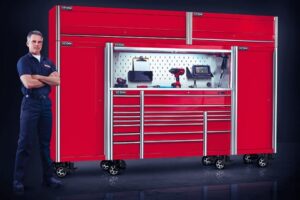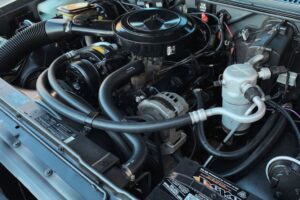Each state in the U.S. requires its drivers to display at least one license plate on their vehicle. But what about the size of the license plate. What is the required license plate size?
The required size of vehicle license plates in the United States is 12 inches by 6 inches. This size may vary slightly depending on the jurisdiction. Generally, license plate sizes are the same globally. This enables manufacturers of license plates around the world to reap the benefits of economies of scale.
So, there is a standard size of license plates in all 50 states in the US. These plates are all made of aluminum, a durable metal. All the license plates across the US have similar overall designs. However, you can vary the logo design, fonts, and other vanity options.
Read on to learn more about the required size of license plates in the US and how this size came to be the standard.
License Plate Size
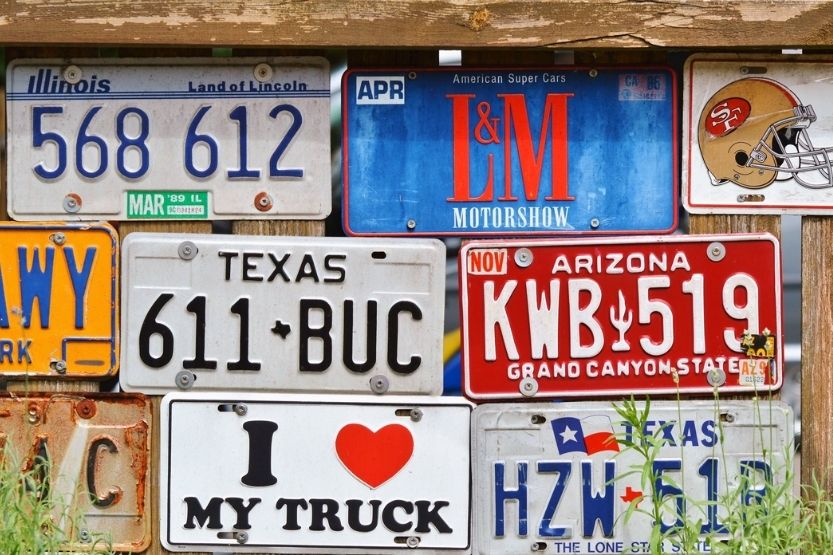
The size of a license plate required in the United States is 12 inches by 6 inches. This dimension may vary slightly depending on the jurisdiction. It is the same size worldwide because it benefits economies of scale to the manufacturers of license plates.
This size is the standard size for all 50 states in the US. Additionally, all vehicle license plates are aluminum which is resistant to corrosion. These plates also have similar overall designs. However, you can tweak the logo design, fonts, and other vanity options.
With the same overall license plate size being followed worldwide, the license plate market will have a boost. Also, more companies making license plates means less waiting time for vehicle owners in some parts of the world who often experience late new license plates’ late deliveries.
Standardization of License Plate Sizes
Up to the year 1905, vehicle owners were still responsible for creating their own license plates. They also stenciled their license numbers on the front and back of their vehicles.
It is very different today where vehicle owners should display standard license plates on their vehicles. The Department of Motor Vehicles in each state monitors this requirement.
Vehicle owners should register their vehicles, and their current license plates are their proof of registration. The government agency responsible for issuing license plates will provide them their license plates upon submission of the necessary documents and proofs.
You can then attach the license plate, which is 12 inches by 6 inches in size, to your vehicle using two screws into two standard screw holes. See more about license plate screw sizes in our article on various license plate screw sizes for your car.
For smaller vehicles such as motorcycles and golf carts, the size of license plates is smaller. In the United States, the standard size for such vehicles is 7 inches by 4 inches.
Regarding the license plate design, all license plates in the United States have a similar overall design. However, the government allows for modifications in the logo design, vanity option, and fonts.
When Did This License Plate Size Become Standard?
During the 1950s, the automotive industry around the world agreed with international standard organizations and governments to make a standard size for vehicle license plates.
Previously the standard size for the front license plate in the EU was 52 cm x 11.1 cm (20.5 in x 4.37 in). The rear plate could have the same dimensions, which are 53.3 cm x 15.2 cm (21 in x 6 in).
Due to the increasing vehicle registration year by year globally, officials issued license plates. There is considerable vehicle growth in the emerging markets, particularly in the BRIC countries. This is spurred by the vigorous and ongoing industrialization and global trade exchanges in these countries.
Over the last couple of years, China has sustained its leadership position being the biggest vehicle market in the world. It is the same with India, whose market is also rapidly expanding. This encouraged many OEM s to enter the market and get their share of the pie.
Car-sharing services sparked the demand for more license plates as well. More people are renting cars for short periods. This situation encouraged more people to drive vehicles and use different car models. These are the driving factors of the surge in the market for vehicle license plates, prompting the need to standardize their sizes.
Legal License Plate Size in the United States
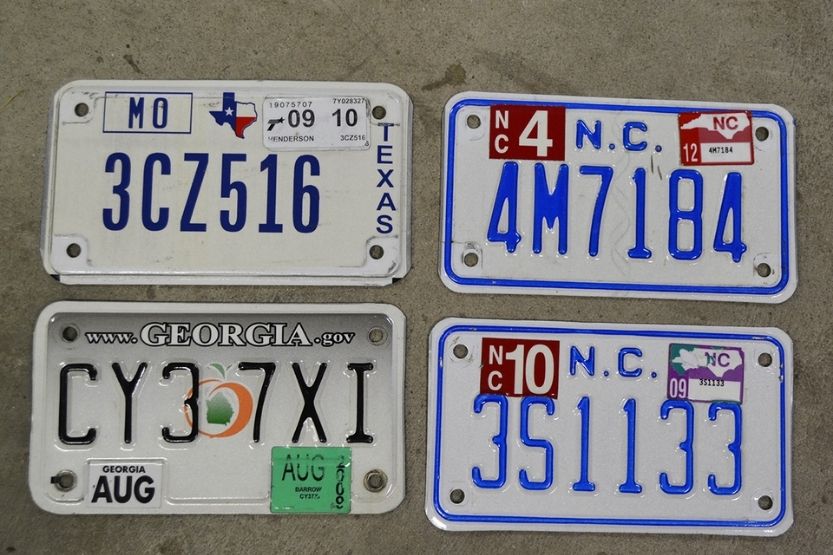
In 1956, the 50 states in the US and their Canadian counterparts agreed with the Automobile Manufacturers Association to fix the size of all passenger vehicle license plates. They agreed to standardize the plates’ size at 6 inches by 12 inches (150 by 300 mm).
The mounting holes are spaced 7 inches (180 mm) apart. Slight variations were allowed depending on what a particular jurisdiction wants.
There were only two North American places that didn’t follow the standards, Miquelon and Saint Pierre. While the Northwest Territories have their license plates shaped like a polar bear, they are still made from the standard rectangular plate.
For motorcycles, smaller plates were required. These smaller plates were also required for certain construction equipment, trailer types, and mopeds in certain jurisdictions. In Puerto Rico, a US territory, European-sized plates are allowed, with an additional fee.
Although motorcycle plates’ size is not standardized, most motorbikes have 7 inches by 4 inches (180 mm by 100 mm) size license plates. It has been this way in almost all the states since the 1980s except Minnesota. MN still uses 7 and 3/16 inches by 4 and 3/16 inches (183 mm by 106 mm) plates.
The Evolution of License Plates
Before there were license plates, the US government regulated vehicle registration through registration bureaus. As early as 1892, some states realized the necessity of some form of regulation because of the increasing numbers of motorized vehicles running on the streets.
The roads were deteriorating fast with pedestrians, horses, and now automobiles running around. Regulations and money were a requirement to remedy the problem. Public safety was also becoming a growing issue.
1903
Law enforcement authorities needed a device or a tool that will enable them to track and record vehicle owners and their activities. Thus, the license plate was born. It was in 1903 that it became obvious that horse-drawn carriages were being replaced by motorized vehicles.
As a consequence, there was also a need for a system that will record and tax these vehicles and their drivers. One of the first states to issue driver’s licenses and registration plates for motorized vehicles was Massachusetts.
1918
The car drivers then were worried that their front-mounted license plates would block the airflow to their radiators. In response, some states issued slotted license plates. But they stopped this practice in 1918.
1920
The first license plates were sheet iron. But by 1920, they replaced it with tin sheets, and they used this material until 1920. During the period from 1932 to 1934, Arizona started making its tags from sheet copper.
Porcelain plates also became popular during these early license plate days. Delaware was the last state to use porcelain license plates in 1942. At the time of the Second World War, license plates were being made from soybean-based fiberboard. There was a need then to use metals only for the war effort.
At around 1920, many states started using prison inmates to do the processing of registration plates. This provided useful work for the inmates and also kept the cost of license plate production down.
Then in 1923, the government required that automakers install lights to illuminate license plates at night time. This led to the next development in license plates. The state of Arizona was the first state to issue reflectorized license plates. This happened in 1941.
Another evolution of the license plate started in Georgia. This state was the first one that used decals in 1941. Instead of replacing the license plate every year, a decal is used to update the vehicle’s yearly registration.
1957
And then came 1957, when the size of license plates was standardized. The standard size of license plates became 12 inches by 6 inches (30.48 cm by 15.24 cm) in every state in the Union after that.
Since the early days of vehicle license plates up to around 1965, many states displayed county designations, police troop codes, and congressional districts on their license plates. But by 1991, only 10 states continued to observe this practice. The advent of computer tech made this possible since fewer codes are required to identify vehicles quickly.
Strangely, several words referring to license plates date back to the automobile’s early history. You can trace it back to the early days of horses and carriages. For instance, Vintage Vehicles have Horseless Carriage license plates in several states. Historical plates are also issued to car owners whose vehicles were built after 1922 and 25 years old and older.
Some trucks in Alabama have a license to operate in a certain area that has a 15-mile radius. This is an outdated regulation based on the total distance a mule can travel in one day. So, the license plates on these types of trucks are now called mule tags.
During the early days, when they started to register motorcycles, motorbikes have small plates. The officials also asked bikers to carry brass watch fobs that bear their registration information.
What Does F.P. Mean on a License Plate?
Background Information About License Plates in the United States
The notion that the metal plates attached to motorized vehicles are license plates is a wrong assumption. As a driver, you should get your license to drive a motor vehicle. And you should also register the vehicle so it can run on the streets.
In other words, these plates are not really license plates but should be accurately called registration plates. The authorities get to know the vehicle registration and the place where the driver registered through the plate.
Different government agencies regulate and administer the rules that cover motor vehicles in the United States and Canada. These departments have their own coloring systems, numbering, and issuance of plates.
Law enforcers can quickly identify the types of vehicles. Their registration is through the alpha and numeric character combinations, the words or captions embossed, and the color combinations of the metal plates.
Information Police Officers Can Get from License Plates

There are several things in license plates that resonate with those who know how to decode them. For instance, police officers can identify a vehicle by looking at its license plate and get the following information:
- Validity of registration
- Weight and use of the vehicle
- Type of class of the vehicle
- Information about the vehicle owner
On passenger cars, the license plate could convey the owner’s occupation, special codes for certain groups, special codes for government officials, the country of residence of the vehicle owner, and many more.
Vehicles for businesses such as trucks and buses receive different treatment in the US. They usually have registration plates of a different color. Their codes are also different from those of passenger cars. Commercial vehicle registration plates require change more often than those of passenger cars.
Of the 51 states in the US, 31 of them require two plates for each vehicle. You should display one plate at the front of the vehicle and the other plate at the back. The rest of the states only require one plate at the rear of the vehicle.
Conclusion: Size of License Plate
In the United States, the required size of vehicle license plates is 12 x 6 inches. This size may vary slightly depending on the jurisdiction. In general, the size of license plates is the same around the world. This allows license plate makers across the planet to benefit from the economies of scale.
Again, from your license plate a police officer can tell the following:
- Validity of registration
- Weight and use of the vehicle
- Type of class of the vehicle
- Information about the vehicle owner
Thus, there is a standard size for the license plates in the U.S but no worries because you can still tweak it in terms of logo design, fonts, and other options-giving it is a nice touch of your personality.
Related reading:
License Plate Screw Size – What Size Screws Will Fit Your Vehicle?
Find Vehicle Owner by License Plate (Free) [5 Ways]
Find License Plate Number [By VIN and Other Methods]
How Do I Find Out What Options My Car Was Ordered With? [Using VIN]

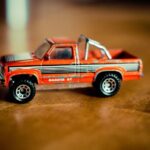
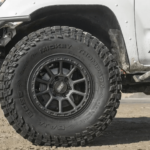
![C-clamp for Brakes [8 Best and What Size Should You Use?] c clamp for brakes](https://roadsumo.com/wp-content/uploads/2022/05/c-clamp-for-brakes-150x150.jpg)



